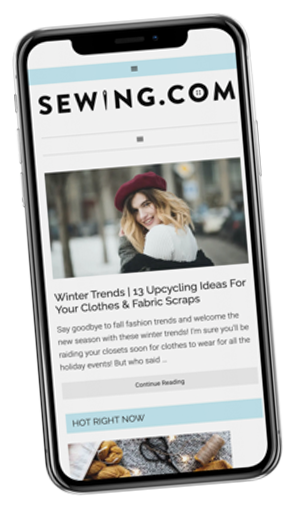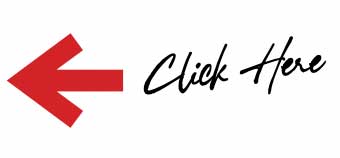Whenever I see those crafty sewing projects posted on blogs or on YouTube, there is an urge for me to do those projects as well. If you're thinking the same way as I do, it would be tempting to think of getting started right away. But how do we get started? Before anything else, we need to have the basic sewing tools we will be using. So, let's check here the tools and information we will need to get started.
Sewing Basics | The Must-Have Sewing Tools To Get Started
Here Are The Basic Sewing Tools You Will Need If You're an Absolute Beginner
Learning how to sew is so fun and very easy. It is where we can absolutely show off our creativity. Did you ever love a garment you saw on Fashion TV? We can imitate them. See, instead of buying those things, we can literally make our own, including tote bags, scarves, purses, accessories and more. In that way, we will be able to save a lot of money. And, aside from that, it can be a healthy hobby too, because it can reduce stress.
Does it sound very interesting? Of course, because it is. Sewing is challenging the fact that you may encounter several mistakes, but, we all know that it's part of learning. All beginners started from scratch, however, it will just take some few practice to perfect them. And of course with the help of the proper tools.
Before going off to purchase tools, you will need a ‘to-buy' list of the necessary tools to get started. Some items might already be available in your home! Read on and let's check the image below for the perfect tools we will be using.
Thanks to cholyknight for this infographic!
Wanting to have sewing tools will need an amount to spend, and the fact that it's quite costly could be difficult. But fortunately, with this chart, will show us an idea for a cheaper alternative to start with. These tools are ranked from good to best that will depend on your budget.
1. Sewing Machine
Good: YOUR HANDS – It will take a bit longer than using a machine, but you have more control over where you stitch. Great for when you're starting out or doing fine detail work!
Better: STARTER MACHINE – Found at department stores for $50-$150. All you need is a straight and zigzag stitch, and preferably variable stitch length. Might give you trouble sometimes, but it's a cheap way to get started.
Best: MID-RANGE MACHINE – Usually found at sewing machine dealers for $150-$400. Will have fewer issues than a cheaper machine. Best if you're serious about sewing.
2. Scissors
Good: CRAFT SCISSOR – Anything that will cut paper and fabric. Might cause some frustration, but it'll get you started.
Better: FABRIC SCISSORS – Cost $5-$15 at most sewing stores. Much sharper and should only be used for fabric. Spring loaded variates are easy on your hands.
Best: EMBROIDERY SCISSORS – Tiny and accurate, these are ideal for precise cutting work and getting where larger scissors can't reach.
3. Thread
Good: ALL-PURPOSE THREAD – Most basic polyester threads are perfect for sewing. Nothing fancy required.
Better: HEAVY DUTY THREAD – Nice for hand sewn parts that need extra strength, like attaching heads, eyes, and noses, etc.
Best: THREAD CONDITIONER – Such as bees' wax or Thread Heaven. Prevents tangles and strengthens your thread.
4. Point Turning
Good: CHOPSTICK – Narrow and precise, but just blunt enough to avoid poking holes on your fabric.
Better: POINT TURNER – Specifically designed to turn points, so it works very intuitively. Hard to get very narrow areas, though.
Best: HEMOSTATS – A medical tool that's narrow and blunt nut also grip. Turns thin pieces and grabs stuffing. Incredible useful.
5. Fabric Marking
Good: PENCIL/COLORED PENCIL – Usually washes out or brushes away. Use on the wrong side of fabric, to be sure. Hard to mark on some slippery or fluffy fabrics.
Better: CHALK or TAILORS CHALK – Great on dark fabrics. Brushes away easily; even better with water and a cloth. Not as precise as a pencil.
Best: FABRIC MARKER – Specially designed to mark fabrics and wash away with water. Precise and easy to see.
6. Pins
Good: PLASTIC HEAD PINS – All-purpose pin in a relatively long length. A big plastic head is easy to see but melts when ironed.
Better: METAL PINS – Pins with a metal head; safe to iron. A small head is less likely to catch thread while hand sewing.
Best: BALL-POINT PINS – Ideal when using knit fabrics in plushes. Ball-point pin tip passes through knit fabrics easily.
7. Needles
Good: SHARPS – A basic hand sewing needle you'll always need regardless of whether you have the machine.
Better: UNIVERSAL NEEDLES – Can handle a variety of needle plush fabrics on the machine. Might be troublesome on specialty fabrics.
Best: FABRIC-SPECIFIC NEEDLES – If using special fabrics, pick up needles that are specific to it, such as stretch needles for knitting.
8. Ruler
Good: TAPE MEASURE – Super cheap and great for measuring curves. Flexible so it gets into hard-to-reach areas.
Better: RIGID RULER-YARD STICK – More accurate than a tape measure since it won't bend on you.
Best: QUILTING RULER – Measures in two dimension; great for checking if things are parallel or perpendicular.
9. Glue and Basting
Good: GLUE STICK – Washable kinds are great for basting fabric pieces together that are tricky to sew. Not the strongest bond, but it'll do.
Better: HOT GLUE – Creates a quick-drying, strong bond do it's great for plush pieces that are awkward to hold together before sewing.
Best: FABRIC GLUE – Ideal glue for basting fabric together. Takes longer to dry but is best suited to fabric. More accurate than a glue stick.
10. Seam Ripper
Don't need anything fancy for this. Everyone makes mistakes and everyone needs a seam ripper.
11. Iron and Iron board
Unlike other types of sewing, plus projects don't need much ironing. But they're handy for fusible web applique or for pressing crisp fabrics.
Perhaps you've already completed all the basic tools you will need. Always remember to consider the quality of the tools you will be using as it affects the outcome of your project. Therefore, let's start sewing from simple and learn the basics. Working on harder projects is also the best way to learn and slowly build our new found sewing skills. Any day from now, you'll never know, you're already sewing like a pro. Enjoy!


